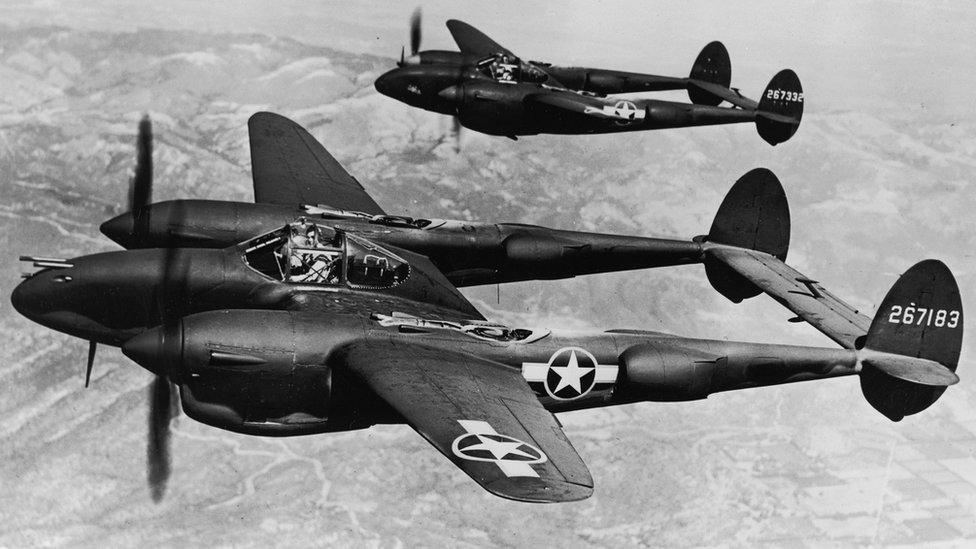World War Two seaplane tenders return to Lough Erne
- Published
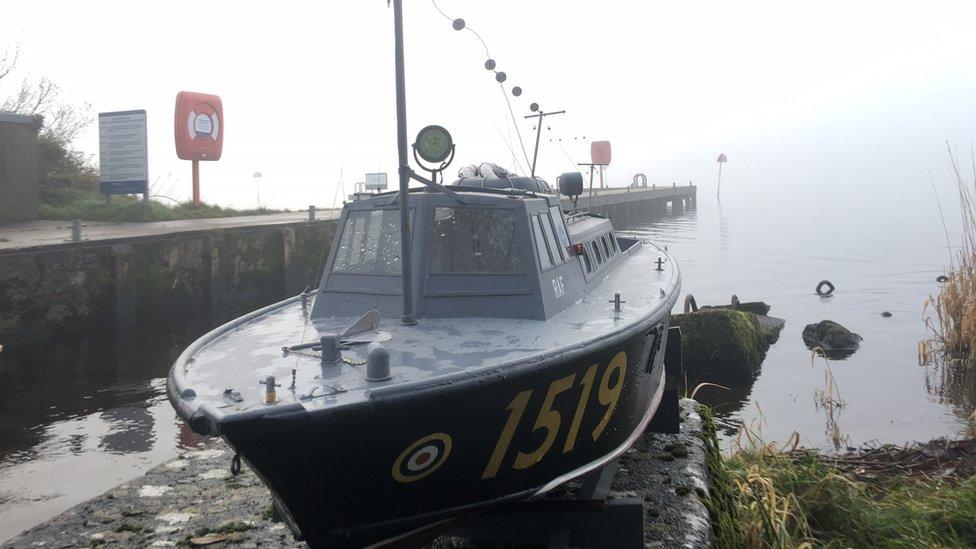
The 1519 model is a replica of the radio-controlled tender used during WWII
The Sunderlands and Catalinas, stationed on Lough Erne at RAF Castle Archdale during World War Two, are legends of that conflict.
They helped detect the German battleship, the Bismarck, in 1941.
But they would never even have reached the sky without the tenders that serviced them.
"All seaplane bases had tenders to bring crew out to the planes and bring them back in again," said Fred Ternan, of Lough Erne Heritage.
"Then there were refuelling tenders, they were basically a floating petrol tank.
"And then there were larger ones, pinnaces, used for other work, and they had a sort of crane on them, which they could use to lift things, moorings and that sort of thing."
Wartime heritage
Some of the original moorings are still in place along the Lough Erne shoreline, but the seaplane tenders have been long decommissioned and lost.
That's driven Fermanagh man and retired builder Seamus Gormley to painstakingly reconstruct them - in miniature.
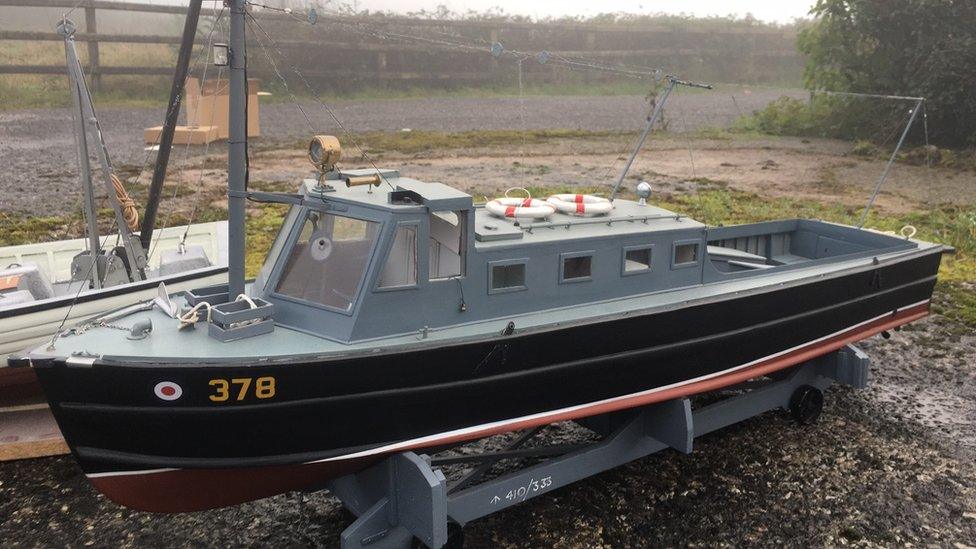
The 378 model is made from wood from the original WWII tender
"It's just my interest in the wartime history of Lough Erne, since I was a child," he said.
One of Seamus' models is even made with some of the wood from the only remaining tender, the 378.
"It has a lot of the DNA of the original seaplane tender on it, which is now a wreck lying in a field outside Enniskillen.
"But I retrieved some of the boards of it and the main structure of 378 is the DNA of the original boat."
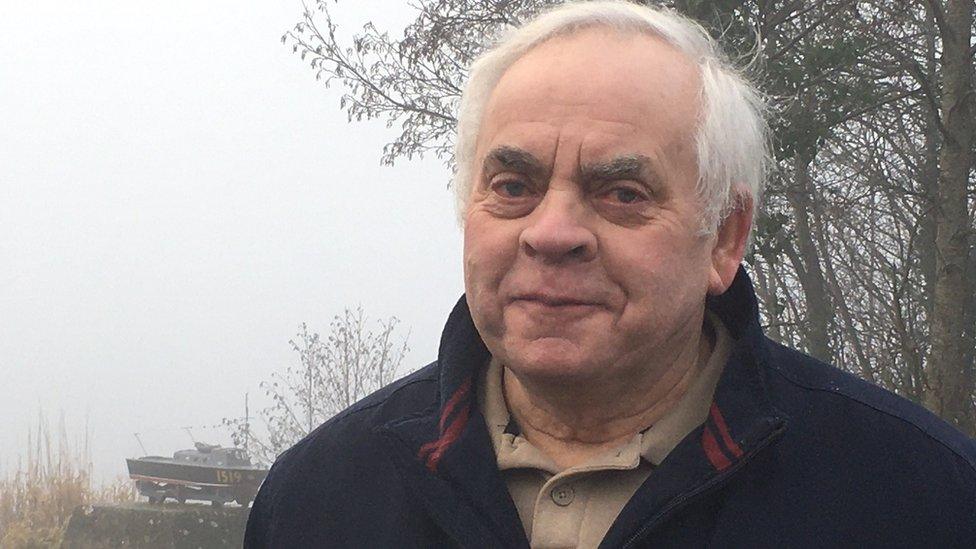
Retired builder, Seamus Gormley, has reconstructed the WWII tender in miniature form
The location of the now-mouldering 378 is being kept secret, as the Lough Erne Heritage group hopes to acquire the remains for restoration at some stage.
Seamus' latest model is the 1519 - radio-controlled and built entirely to scale, based on RAF plans like the others.
Difficult landings
"It [the 1519] arrived at Castle Archdale I think it was March 1943.
"And it has the distinction of being the longest-serving seaplane tender on Lough Erne, from 1943 until 1956."
As well as transporting crews, towing and refuelling, tenders also helped keep the seaplanes safe.
"When planes were about to take off or coming back from a mission out over the Atlantic, the tenders had to go out and made sure there were no civilian boats in the way," said Fred.
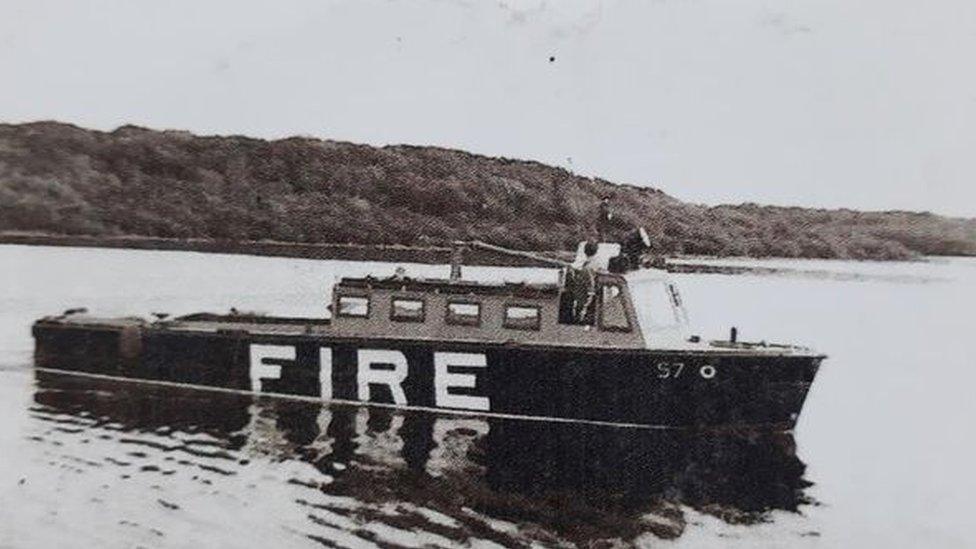
Alan Henson was the coxswain for the No. 47 fire boat
"And when a plane was coming in to land on a very calm lough, it was very difficult to make out where the surface was.
"On a couple of occasions, planes had actually gone right in and crashed.
"So a tender would have come out from Castle Archdale and driven around in the area where the plane was going to land to create ripples on the surface, to ensure the pilot could satisfy himself where the surface of the lough was."
One of the last pilots of the tenders, Alan Henson, remembers 1519 and the other boats well.
He was stationed at Castle Archdale from 1954-1957.
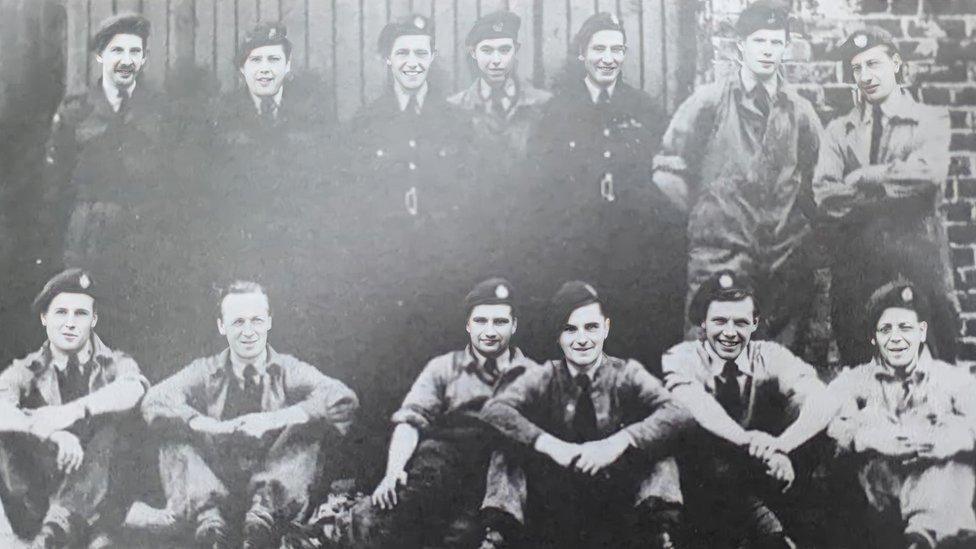
Alan Henson (back row, third from left) along with Archdale soldiers. He was one of the last pilots of the tenders
"I was there about a year before the sun came out," he said.
"At first, I was a deckhand on one of the boats, then I became a coxswain, and I used to drive the fire float, No. 47" he recalled.
"That was the one I was in charge of.
"It was a bit unstable, because it had the two big tanks of oxblood (oxblood was used to make the foam for putting out fires on the water), and going out on it when it was rough, you'd think it could turn over."
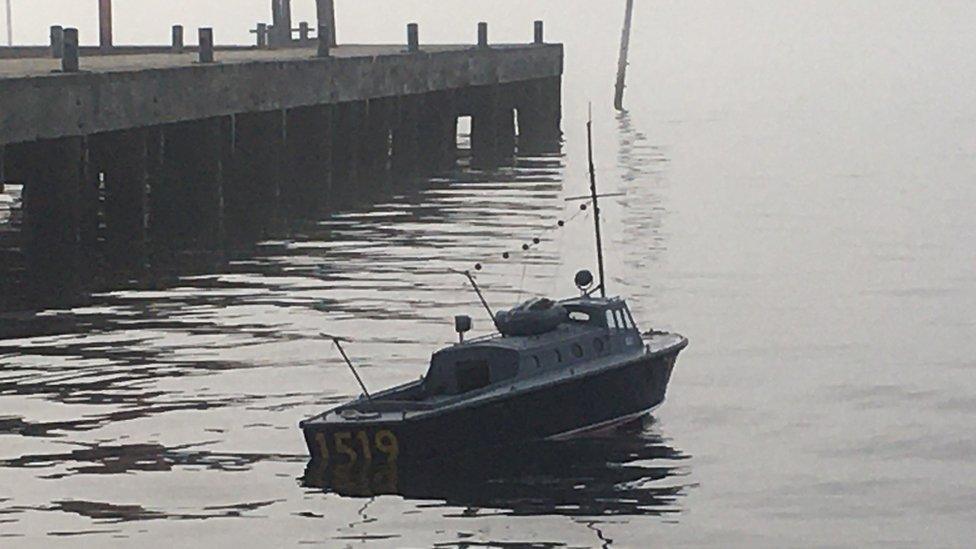
Model 1519, the radio-controlled tender, on the water in Lough Erne
Now aged 85, he believes the history should be preserved.
"It's very important, especially for the marine craft section of the RAF because it's very rarely mentioned.
"It should be more thought of."
Related topics
- Published4 July 2019
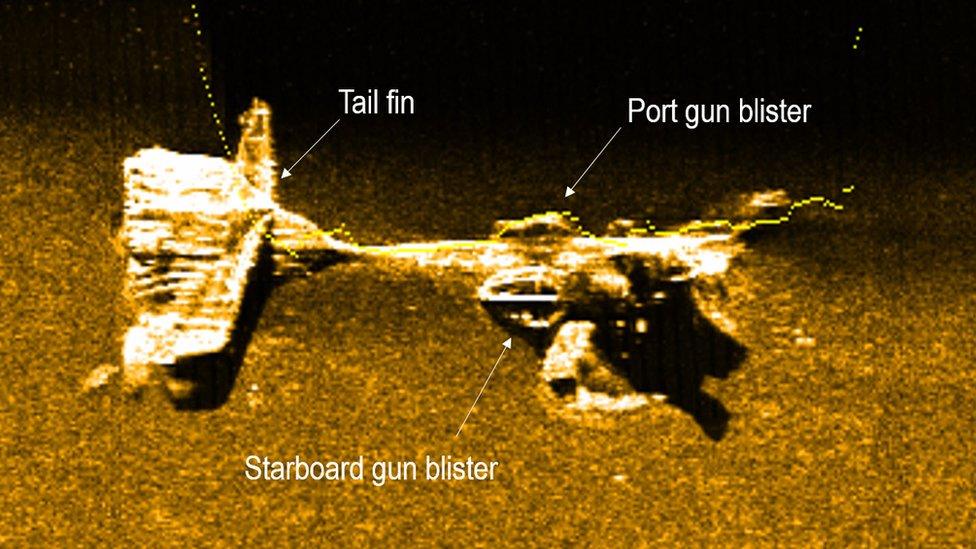
- Published29 June 2019
